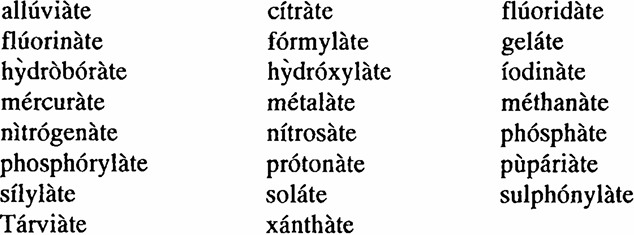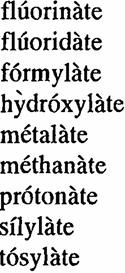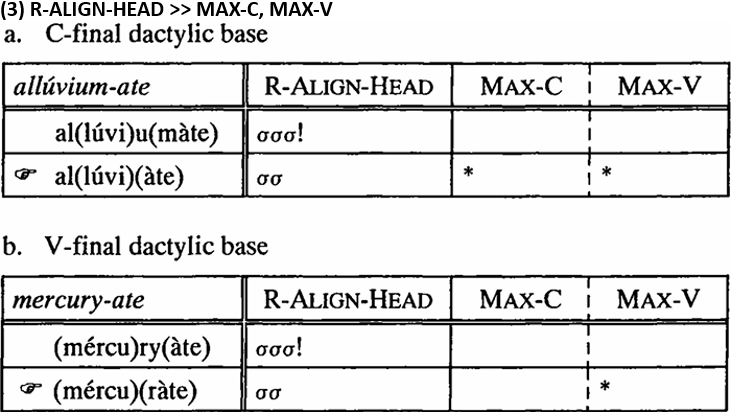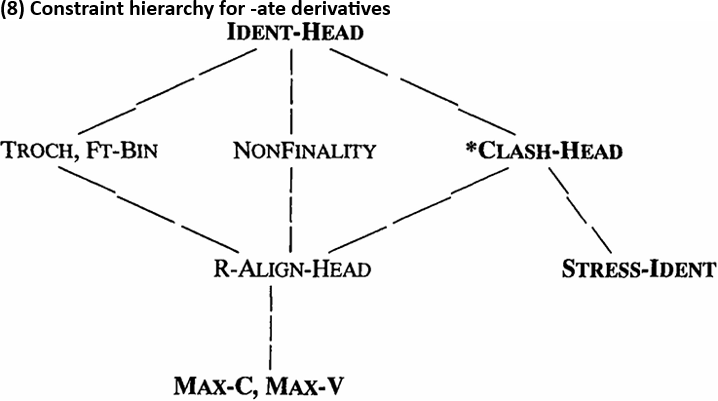

Grammar


Tenses


Present

Present Simple

Present Continuous

Present Perfect

Present Perfect Continuous


Past

Past Continuous

Past Perfect

Past Perfect Continuous

Past Simple


Future

Future Simple

Future Continuous

Future Perfect

Future Perfect Continuous

Passive and Active


Parts Of Speech


Nouns

Countable and uncountable nouns

Verbal nouns

Singular and Plural nouns

Proper nouns

Nouns gender

Nouns definition

Concrete nouns

Abstract nouns

Common nouns

Collective nouns

Definition Of Nouns


Verbs

Stative and dynamic verbs

Finite and nonfinite verbs

To be verbs

Transitive and intransitive verbs

Auxiliary verbs

Modal verbs

Regular and irregular verbs

Action verbs


Adverbs

Relative adverbs

Interrogative adverbs

Adverbs of time

Adverbs of place

Adverbs of reason

Adverbs of quantity

Adverbs of manner

Adverbs of frequency

Adverbs of affirmation


Adjectives

Quantitative adjective

Proper adjective

Possessive adjective

Numeral adjective

Interrogative adjective

Distributive adjective

Descriptive adjective

Demonstrative adjective


Pronouns

Subject pronoun

Relative pronoun

Reflexive pronoun

Reciprocal pronoun

Possessive pronoun

Personal pronoun

Interrogative pronoun

Indefinite pronoun

Emphatic pronoun

Distributive pronoun

Demonstrative pronoun


Pre Position


Preposition by function

Time preposition

Reason preposition

Possession preposition

Place preposition

Phrases preposition

Origin preposition

Measure preposition

Direction preposition

Contrast preposition

Agent preposition


Preposition by construction

Simple preposition

Phrase preposition

Double preposition

Compound preposition


Conjunctions

Subordinating conjunction

Correlative conjunction

Coordinating conjunction

Conjunctive adverbs


Interjections

Express calling interjection


Grammar Rules

Preference

Requests and offers

wishes

Be used to

Some and any

Could have done

Describing people

Giving advices

Possession

Comparative and superlative

Giving Reason

Making Suggestions

Apologizing

Forming questions

Since and for

Directions

Obligation

Adverbials

invitation

Articles

Imaginary condition

Zero conditional

First conditional

Second conditional

Third conditional

Reported speech


Linguistics

Phonetics

Phonology


Semantics


Pragmatics

Linguistics fields

Syntax

Morphology

Semantics

pragmatics

History

Writing

Grammar

Phonetics and Phonology

Semiotics


Reading Comprehension

Elementary

Intermediate

Advanced


Teaching Methods

Teaching Strategies
The phonology of -ate derivatives
المؤلف:
Ingo Plag
المصدر:
Morphological Productivity
الجزء والصفحة:
P213-C7
2025-02-12
505
The phonology of -ate derivatives
In the above discussion we already briefly hinted at some phonological properties of -ate verbs. I will investigate these properties in detail, restricting my remarks to the forms listed in (Ornative/resultative -ate(2)), which conform to the LCS of productive -ate formations. However, the majority of the other -ate derivatives listed in the appendix also conform to the analysis to be proposed. In (1) the pertinent forms are repeated with their stress patterns:
(1) 
Although there are a number of phonologically peculiar forms, the similarity to -ize derivatives is striking, and we will see that the constraint hierarchies of the two affixes differ only minimally.
To begin with, we can state that -ate derivatives basically follow the stress pattern of nouns. Disyllabic trochaic base words survive intact, which is the result of a constraint ranking in which FR-BLN, TROCH, NONFINALITY and IDENT-HEAD dominate R-ALIGN-HEAD. With base words stressed on the penultima, this ranking leads to main stress on the antepenult (of the derivative), with no stress shift. This is exemplified by the majority of derivatives, as given in (2):
(2) 
The base words fluorine, fluoride and silyl can also be pronounced with a diphthong, i.e. secondary stress, on the ultima.1 The constraint model predicts for these forms that the secondarily stressed syllable of the base ends up destressed in the derivative, since *CLASHHEAD is ranked above STRESS-LDENT. This has the effect that flúorináte, flúoridàte, and sílylàte are optimal for both kinds of base word pronunciations.
The crucial systematic difference between -ize derivatives and -ate derivatives concerns the position of R-ALIGN-HEAD. With -ize derivatives we saw that (only) vowel-final bases are truncated due to the ranking of R-ALIGN-HEAD between MAX-C and MAX-V. Derivatives in -ate show a different kind of behavior in that they allow truncation with both vowel and consonant-final dactylic base words.
Thus allúviàte, nítrosàte, pupáriàte (with consonant-final bases allúvium, nítrosyl, pupárium) and tárviàte, mércuràte (with vowel-final bases Tárvia and mércury) truncate their final rhymes under -ate suffixa tion, which necessitates a ranking in which both MAX-C and MAX-V are ranked below R-ALIGN-HEAD:

In other words, base words are shortened under suffixation of -ate in order to allow main stress as far as possible to the right. The fact that these forms do not shift the stress to the right to better satisfy R-ALIGN-HEAD indicates that IDENT-HEAD must rank above R-ALIGN-HEAD. If this were not the case, at least some of the forms in (2) would end up with penultimate stress. For example, *pròtónàte would emerge as optimal, if R-ALIGN-HEAD dominated IDENT-HEAD. This is independent evidence for the rankings established so far, given in (4):
(4) 
However, a small set of derivatives exhibit stress shift, which means that in those cases IDENT-HEAD must be ranked differently. The three forms nìtrógenàte, phosphórylàte and sulphónylàte are based on words which have primary stress on their first syllable. They are stress-shifted, which means that IDENT-HEAD is violated in order to better satisfy R-ALIGN-HEAD. Consider for example nìtrógenàte·.

If the dactyls nítrogen and phósphoryl were suffixed in a systematic fash ion, the constraints in (3) and (4) would trigger truncation, as exemplified with the parallel base form alluvium in (3a).
With sulphónylàte (base word: [sΛ́lfənàɪl), truncation is impossible because of high-ranking MAX-σ̒-V ('don't delete stressed vowels'), but again IDENT-HEAD is exceptionally dominated by R-ALIGN-HEAD:

Although these forms do not obey the systematic ranking of IDENT-HEAD over R-ALIGN-HEAD, they still confirm the higher rank of * CLASH-HEAD over R-ALIGN-HEAD that was already established. In spite of the fact that stress can be shifted (in these cases!), stress is not shifted to the penultima, i.e. a better satisfaction of R-ALIGN-HEAD is not possible, because this would lead to a * CLASH-HEAD violation:

Since only three forms show the peculiar violation of IDENT-HEAD, they can be regarded as idiosyncratic in this respect. Another truly exceptional form is í.o.di.nàte, whose base word is trisyllabic ([aí.jəd.ɪn] / [aí.jə.daɪn] / [aí.jə.din]). If systematic, the optimal derivatives would either involve truncation (i.e. ío.dàte on the basis of [a.jəd.ɪn]) or no truncation and no stress shift (i.e. í.o.dì.nàte on the bases of [aɪ.jə.daɪn] or [aɪ.jə.din]). This is however not the case, hence í.o.di.nàte is the only exception to the strictly alternating stress we find with -ate derivatives.
Another unexpected set of derivatives appear to be disyllables with primary stress on -ate (geláte, oláte, soláte). However, as already mentioned above, these forms are back-formations on the basis of input nouns -átion, which suggests that they have preserved the main stress of their corresponding output form on the cost of a violation of NONFINALITY. This means that IDENT-HEAD ranks above NONFINALITY. Note that it was not possible to establish this ranking for -ize derivatives because there are no possible correspondents with primary stress on -ize. It is therefore possible to analyze geláte, oláte, soláte as completely systematic formations, only that they are coined on the bases of nouns in -ation, i.e. they have another complex form as their correspondent.
Finally, there is a class of base words with secondary stress on their ultima which does not behave as predicted, namely nouns ending in the suffix -ate, which denote "salts formed by the action of an acid on a base, as nitrate, acetate, sulphate, carbonate, alcoholate, ethylate" (OED). In general, these base words become -ate verbs by conversion, as evidenced by cítràte, hỳdròbóràte, phósphàte and xànthàte. This could be interpreted as a haplology effect, i.e. the avoidance of identical nuclei in adjacent syllables (OCP-NUCLEUS, see Plag 1998). It remains however unclear, why an OCP violation could not be avoided by destressing, cf. !cítr[ə]tàte. We will leave this issue to future investigations.
To summarize our phonological analysis of -ate derivatives, we can state that in spite of their apparent diversity, verbs in -ate exhibit a rather predictable phonological gestalt, which can be captured by almost the same constraint hierarchy as the one pertaining to -ize derivatives. The difference lies primarily in the ranking of MAX-C below R-ALIGN-HEAD, leading to strictly alternating stress. The data could not provide evidence for the ranking of some of the constraints operating over -ize derivatives, such as *SCHWA-V, STRESS-IDENT & DEP, and OCP-ONSET, but could indicate the higher rank of IDENT-HEAD with regard to NONFINALITY. The constraint hierarchy for -ate derivatives is summarized in (8):

The slightly different ranking of these constraints has consequences not only for the kinds of stem allomorphy -ize and -ate may trigger, but also for the distribution of the two suffixes.
1 I assume that fluoride and fluorine are disyllabic, no matter whether there is a secondary stress on the ultima or not.
 الاكثر قراءة في Morphology
الاكثر قراءة في Morphology
 اخر الاخبار
اخر الاخبار
اخبار العتبة العباسية المقدسة

الآخبار الصحية















 (نوافذ).. إصدار أدبي يوثق القصص الفائزة في مسابقة الإمام العسكري (عليه السلام)
(نوافذ).. إصدار أدبي يوثق القصص الفائزة في مسابقة الإمام العسكري (عليه السلام) قسم الشؤون الفكرية يصدر مجموعة قصصية بعنوان (قلوب بلا مأوى)
قسم الشؤون الفكرية يصدر مجموعة قصصية بعنوان (قلوب بلا مأوى) قسم الشؤون الفكرية يصدر مجموعة قصصية بعنوان (قلوب بلا مأوى)
قسم الشؤون الفكرية يصدر مجموعة قصصية بعنوان (قلوب بلا مأوى)

















